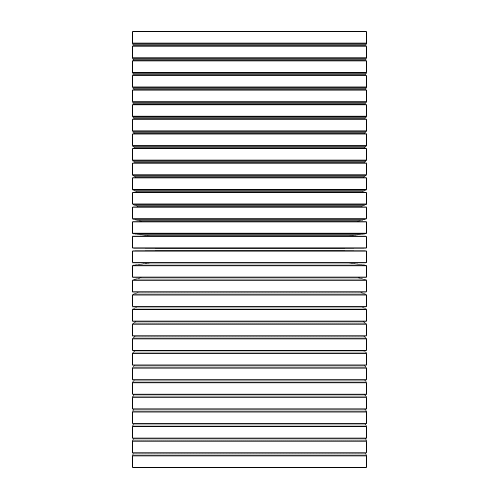
Wonderlust
Sarah Anne Johnson Arms
“Wonderlust: New Sculpture”
Sarah Anne Johnson (Sculpture), 2015 sculpey, tin foil, wire, metal, and oil paint 10 x 5 x 5"
Sarah Anne Johnson at Julie Saul Gallery…
consecuencias de lo digital…


Sarah Anne Johnson Arms
“Wonderlust: New Sculpture”
Sarah Anne Johnson (Sculpture), 2015 sculpey, tin foil, wire, metal, and oil paint 10 x 5 x 5"
Sarah Anne Johnson at Julie Saul Gallery…
El mundo del arte es algo complicado y absurdo. Y el de su mercado todavía más. No existe el arte malo, sino malos consumidores y valoraciones. O mejor dicho, malos compradores de arte.
Aquí hay un artículo al respecto de esta noción, donde un artista llamado Richard Prince decidió convertir en piezas de galería a fotos robadas de las cuentas de instagram de otras personas, lo que por un lado, parece un fraude, pero por otro parece confirmar la vieja idea platónica de que “el arte está en los ojos de quien lo ve”…
Right now you can purchase someone’s Instagram photo for around $100,000. The money won’t go to the photographer, however, it will go to “artist” Richard Prince, who has blown up and made prints of other people’s Instagram photos for his series titled “New Portraits.” The previously private show at the Gagosian has been a part of Frieze.
According to Petapixel, “Prince is notorious in the art world for taking other people’s work, ‘appropriating’ them as his own with various changes, and then selling them for large amounts of dough.”
And no, he did not get permission for these prints, which are screenshots of the images with one addition from Prince, “a short message [he] posted as the last comment on each one”…

Una escultura virtual, inspirada en un objeto que aparece dentro del video-juego llamado Antichamber (que ha ganado varios premios por su extraño manejo de espacios no-euclidianos dentro de él). Si no lo conocen es hora de hacerlo…
intothecontinuum:
Inspired by an exhibit in the Gallery Room in Antichamber
Mathematica code:
v[x_, y_, z_] =
Flatten[Table[ {(-1)^i*x, (-1)^j*y, (-1)^k*z}, {i, 0, 1}, {j, 0,
1}, {k, 0, 1} ], 2];
f = {{1 , 2 , 4 , 3 }, {1 , 2 , 6 , 5 }, {5 , 6 , 8 , 7 }, { 3, 4 ,
8 , 7 }, { 1, 3 , 7 , 5 }, { 2, 4 , 8 , 6 } };
G[x_, y_, z_, s_, H_ , t_] :=
Table[
Translate[
Rotate[
GraphicsComplex[v[x, y, z], Polygon[f]],
h (Cos[t] + 1) Pi/4, {0 , 0, 1 }],
{0, 0, s*h}],
{h, 1, H}]
Manipulate[
Graphics3D[
G[2, 2, .1, .25, 30, t],
Lighting -> "Neutral", ViewPoint -> Front, ViewAngle -> 35 Degree,
Boxed -> False, ImageSize -> 500],
{t, 0, Pi}]
No sabía que los hombres lobo son de Grecia, las sirenas de Asiria, y los ogros de Francia. Aquí hay una buena galería de LIFE dedicada a explicar el origen de esos y otros monstruos famosos…

In the 5th century B.C., the Greek historian Herodotus wrote of the Neuri tribe of what is now Belarus. For a few days a year, he wrote, the Neuri transformed into wolves before regaining their human forms.

Shirotokuro is a shortened form of ‘Shiroi to kuroi’ which is Japanese for ‘black and white’.
Shirotokuro is a curated gallery of exquisite design, illustration and photography distilled to it’s purest monochromatic elements of black and white.

Benoit Lambert – member of the Belgian 501st Legion Fan Wars Garrison – takes over the skies in his amazing Darth Vader hot air balloon.
A ride on a hot-air balloon is one of thecoolest things you may want to do some day. These are 12 of the most awesome hot-air balloons ever built.
De por sí la taxidermia es algo bizarro (más allá de posibles justificaciones médicas y/o educativas). Ya ni qué decir de un artículo que muestra lo más bizarro de la taxidermia…
Animal lovers, look away now! These pictures show the misfortune of some of the world’s best known creatures ranging from lame leopards to pitiful polar bears!
The pictures were all posted up a Facebook page aptly named Badly Stuffed Animals and has a current following of 2,707.

This two-legged donkey gives new meaning to the term wonky donkey…
The disturbing animals created when taxidermy goes wrong